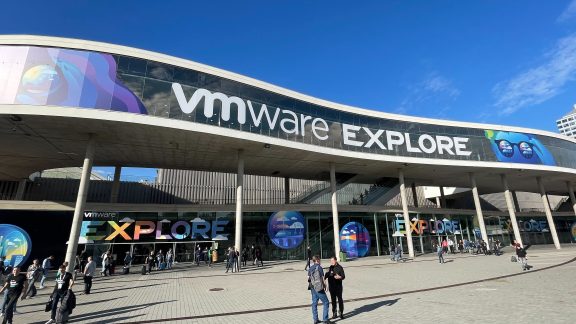VMware User Environment Manager was released earlier this year, adding a powerful tool to the VMware End-User-Computing portfolio. User Environment Manager provides a consistent and dynamic application and desktop experience across physical, virtual, and cloud infrastructures. With User Environment Manager, users retain a persistent user experience across devices and locations. You can define application configuration settings and personal Windows settings that follow the user, wherever they log in. When combined with VMware App Volumes, User Environment Manager provides a simple yet powerful way to manage your instantly delivered applications. This blog post will discuss how you can implement User Environment Manager in an App Volumes environment.
What Is a User Profile?
One function of User Environment Manager is to manage user profiles. First, let us define exactly what a user profile is. A user profile is the collection of data and configuration settings that comprise each user’s Windows session. These personalized settings are specific to each user, and are applied and enforced when the user logs in to their desktop. A user profile contains Windows desktop settings, application configurations, and application data. On the desktop, Windows settings include a background, a screensaver, sound settings, keyboard settings, language preferences, mouse settings, and many more. A user profile also contains user-specific information for each application, for example, Outlook settings, browser Favorites, SQL client temporary data, and Oracle client configuration information.
User Environment Manager in an App Volumes Environment: How Does It Fit?
Both User Environment Manager and App Volumes help provide Workspace Environment Management.
But is User Environment Manager just a profile management tool? As its name aptly suggests, User Environment Manager manages the entire user environment; this includes user profile information and policies. This makes it much more than a profile management tool.

User Environment Manager offers simplified profile and policy management with personalized access across devices and locations for end users. Not only can you manage user profiles easily from a central location, but you can also manage policies to control user environment settings dynamically.
Another great feature of User Environment Manager is that it decouples personalization from the OS. Settings can be updated dynamically, and applied across all supported platforms. Users can log in to a different OS and retain their settings. Application settings are applied only at application launch, thus minimizing login times, and Windows settings (such as the desktop background, desktop screensaver, keyboard settings, and so on) are always injected at login.
To check supported platforms, see System Requirements in the User Environment Manager Administrator’s Guide.
To get a feel for User Environment Manager configuration and setup, see the blog post VMware User Environment Manager Deployed in 60 Minutes or Less.
Where does User Environment Manager fit into the App Volumes picture? App Volumes provides real-time application delivery, with application life cycle management, to end users and desktops. AppStacks (read-only VMDK or VHD files) containing a number of applications are attached to desktops when the user logs in, or they can even be attached after the user is already logged in. User Environment Manager allows you to manage different types of application settings, whether the applications are native to the desktop, are ThinApp packages, or are on AppStacks and writable volumes.
How Do I Implement User Environment Manager with App Volumes?
If you are familiar with application configuration in User Environment Manager, then you are ready to integrate User Environment Manager with App Volumes. There is no difference in User Environment Manager whether you manage an App Volumes application or a natively installed application. Combining these technologies gives you the benefits of both App Volumes and User Environment Manager. You can centrally and dynamically manage these rapidly delivered applications and settings.
Let us briefly look at three common use cases currently implemented in an App Volumes environment.
- App Volumes AppStacks and a workspace management tool such as User Environment Manager
If the set of applications for users is predefined, you can deliver these applications via App Volumes AppStacks only. Some form of workspace management tool is needed. With User Environment Manager managing the workspace, you have a single, scalable solution from one vendor that does not require any extra overhead, thus reducing existing costs. User Environment Manager can manage the IT-controlled application configuration settings and Windows environment settings, and personalized settings. Folder redirection should be enabled to redirect personal data such as the Documents folder and Outlook PST and OST files.
- App Volumes AppStacks and user-installed applications (UIAs) on writable volumes, and a workspace management tool
In the second scenario, there are applications to manage on the App Volumes AppStacks and writable volumes. You can use AppStacks for predefined applications, plus writable volumes for any applications in the environment that are unknown ahead of time. The writable volume UIA Only template allows users to install their own applications. Again, User Environment Manager can manage the IT-controlled application configuration settings and Windows environment settings, and personalized settings. Enable folder redirection for personal data such as the Documents folder and Outlook PST and OST files.
- App Volumes AppStacks and user-installed applications (UIAs) on writable volumes, and user profile without a workspace management tool
In this scenario, there are applications to manage on App Volumes AppStacks and writable volumes. The UIA Plus Profile writable volume template allows you to roam local user profiles across desktops. This means that the Windows Local User Profile configurations and application preferences can follow a user as they connect to different desktops. With the UIA Plus Profile writable volume template, there is no need to enable folder redirection, as personal user data is saved to the writable volume.
It is possible to use the UIA Plus Profile writable volume template without having a workspace management tool solution—however, there is no way of managing the settings at a granular level. With a workspace management tool like VMware User Environment Manager, you can map a custom printer or drive based on the user’s network location. Or a user can make application changes on a Windows 7 desktop and have those settings persist when they access the same application from an RDSH server. App Volumes alone simply delivers the local profile data to the desktop.
How Do I Manage AppStack Applications and Writable Volume UIA Applications with User Environment Manager?
User Environment Manager gives you flexibility when applying settings to your users’ applications. You can configure an application to launch with company default settings, so users can begin working when they start an application the first time. You can even prevent the user from making any changes to those application settings. For example, you might want to lock down a corporate application with predefined settings. Or you can customize some of the settings and also allow for user customization—for example, you can make a specific font mandatory in Microsoft Word but allow your users to customize the rest of the application. You can also specify conditions, and apply application settings to users based on location or device, for example.
To manage user applications you need to create a User Environment Manager configuration (config) file. These User Environment Manager config files can be created in one of three ways:
- Using the User Environment Manager Application Profiler to create config files from scratch—an overview of steps to create these files follows.
- Using existing ADMX files from the software vendor—you can import these ADMX files using the User Environment Manager console.
- Using pre-existing templates available in the User Environment Manager console.
High-Level Overview of Steps to Create User Environment Manager Config Files Using the Application Profiler
Following is a high-level overview of steps to create a User Environment Manager config file with the Application Profiler.
- Assign App Volumes AppStacks containing the applications you want to profile to a clean virtual machine.
- Install and launch User Environment Manager Application Profiler.
- Launch the application to be configured by clicking Start Session.

- Configure the application settings as required.
- Close the application.
- Finally, save this User Environment Manager config file to the User Environment Manager config share, which was created when you installed User Environment Manager.
- To check that the User Environment Manager config file has been successfully moved to the config share, open the User Environment Manager Management Console and click Refresh Tree.
You are now ready to define particular conditions for these application settings, and apply them to users or groups.
A handy tip—did you know that User Environment Manager provides templates for Windows environment settings (Internet Explorer, wallpaper, screensaver, and so on), and for Microsoft Office? It is recommended to use these existing default templates and then create custom User Environment Manager config files for any other applications. This will ensure you have a small profile, because the minimum number of required items is captured in the default templates.
For more details, see the User Environment Manager Administrator’s Guide and the User Environment Manager Application Profiler Administrator’s Guide.
You can also check out some extremely helpful and informative videos on our VMware End-User Computing (EUC) YouTube Channel. The VMware User Environment Manager playlist contains everything from a technical overview of User Environment Manager to configuring the Windows environment, applications settings, and more!
By Gina Daly, technical writer for technical marketing at VMware EUC, with significant contributions from:
- Jason Marshall, Manager, product engineer at VMware EUC
- Stephane Asselin, senior EUC architect for technical enablement at VMware EUC
- Yuvraj Mehta, product line manager for VMware App Volumes research and development
- Pim van de Vis, product engineer at VMware EUC
- Raymond Wiesemann, product engineer at VMware EUC
- Sachin Sharma, product line marketing manager at VMware EUC






